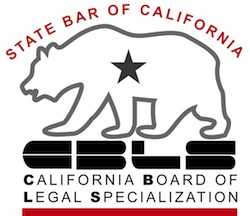The difference between bankruptcy’s Chapter 7 and Chapter 13 is often expressed this way: Chapter 7 is a liquidation proceeding Chapter 13 is a repayment plan And therein lies the biggest misconception about Chapter 13: 13 does not necessarily repay everything you owe. It’s a repayment plan alright, but not necessarily a 100% repayment . […]
Bouncing Back From Bankruptcy
How long does it take to recover from bankruptcy? I started to answer the client’s question before I realized that the question was all backward. Recover FROM bankruptcy? No…. It should be: recover THROUGH bankruptcy! Bankruptcy is the tool for recovering from impossible financial situations. The ailment is debt: bills in excess of what you […]
Do it yourself bankruptcy did him in
For a layman filing a bankruptcy without a lawyer, he didn’t do too badly. He got credit counseling and filed the certificate. He completed the schedules fairly well. He even filed a pro se adversary proceeding to enforce the automatic stay when the foreclosure on a multi million dollar property went forward despite the bankruptcy. […]
5 Lies About Bankruptcy That Enrich Creditors
If the truth will make you free from your debts, your creditors are motivated to lie about bankruptcy. After all, if you think there is no alternative to making payments to them forever, you’ll keep filling their pockets each month. So, there’s no upside for a creditor in feeding you good information about bankruptcy. After […]
Bankruptcy Schedules Are More Than Just Paperwork
Bankruptcy paperwork can make you feel like you are drowning in paper. There’s your paper; there’s the paper your lawyer needs. And there’s the paper the court insists on. Why bankruptcy schedules worth the work It’s easy to try to skate. To cut corners. To shut down. But that paper is critical. Nearly every question, […]
Can You Get A Car Loan After Bankruptcy?
Wheels are essential for most of us to get to work. And whatever you’re driving when you file bankruptcy will need to be replaced at some point. So, how are you going to finance that next car if you’ve just filed bankruptcy and face 7-10 years with the bankruptcy on your credit report? The credit […]
Bankruptcy Alternatives Cost More, Deliver Less
Bankruptcy alternatives often suck. The on-line story of one customer of a debt settlement company particularly sticks with me. Using the “services” of this company, the poster now has six new judgments of record and two garnishments in process. The debt settlement company, however, has its full fee. One man I represented went to a […]
Inherited Homes Now Come With Full Measure Of Consumer Rights
Half a loaf is what you too often got when you weren’t the original borrower on a home loan. No mortgage servicing rights under Federal law came title to the property. Whether you inherited the property or it was awarded to you in a divorce, you get shortchanged by the mortgage lender. Even with a […]
Who To Pay After Bankruptcy
You’ve filed bankruptcy. Your creditors are stayed. A bankruptcy discharge is ahead. You’re out from under unrelenting pressure to pay creditors. But don’t let your sense of relief keep you from planning: who should you pay after your case is filed? Paying creditors after filing bankruptcy Two legal realities drive who needs to be paid […]
Did You Tell The Whole Truth In Your Bankruptcy Papers?
You must “tell the truth” on your bankruptcy paperwork, bankruptcy advice sites intone. Most of us shrug that off: we can’t imagine deliberately lying to a court. But carelessness about bankruptcy schedules abounds. If you give the bankruptcy paperwork just a lick and a promise, the resulting schedules aren’t truthful, not because of lies, but […]
- « Previous Page
- 1
- 2
- 3
- 4
- …
- 68
- Next Page »










